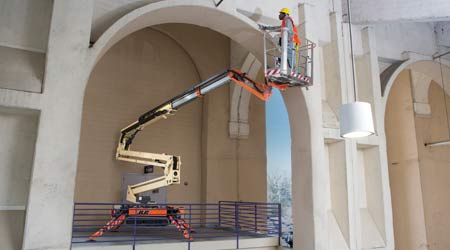 By conducting risk assessments before a project begins, managers and technicians can better understand the conditions a work site presents and the type of lift required.
By conducting risk assessments before a project begins, managers and technicians can better understand the conditions a work site presents and the type of lift required.Lifts: Safe Operation Requires Training
As lift standards and features continue to evolve, technicians need to be properly trained in order to help ensure safe operation.
As MEWPs and the standards that govern them evolve, managers need to be certain that equipment users are trained effectively in order to ensure they work as safely as possible. One emerging trend in operator training involves virtual reality (VR).
“I think this is a great tool for training people,” Smith says, referring to VR technology. “It’s still new technology, but the feedback we’re getting from people that are using it is tremendous. It’s like a flight simulator. You put the headset on, and you’re in the boom lift.
“The industry is looking for new ways to train people, and I think VR is going to be a trend that we are going to see more and more of. It is extremely realistic, almost as good as being in the machine. This is a fully immersive training environment. Two or three years from now, it will be very common and an even better way of training operators.”
Whatever the training technique, managers must be certain that operators are familiar with the specific MEWP they will be using.
“Operators need certification to operate that specific aerial device and then need continual familiarization for that specific lift, especially to keep up with advances,” Kesser says. “Each employee should also have operator familiarization for that specific lift.”
Related Topics:














